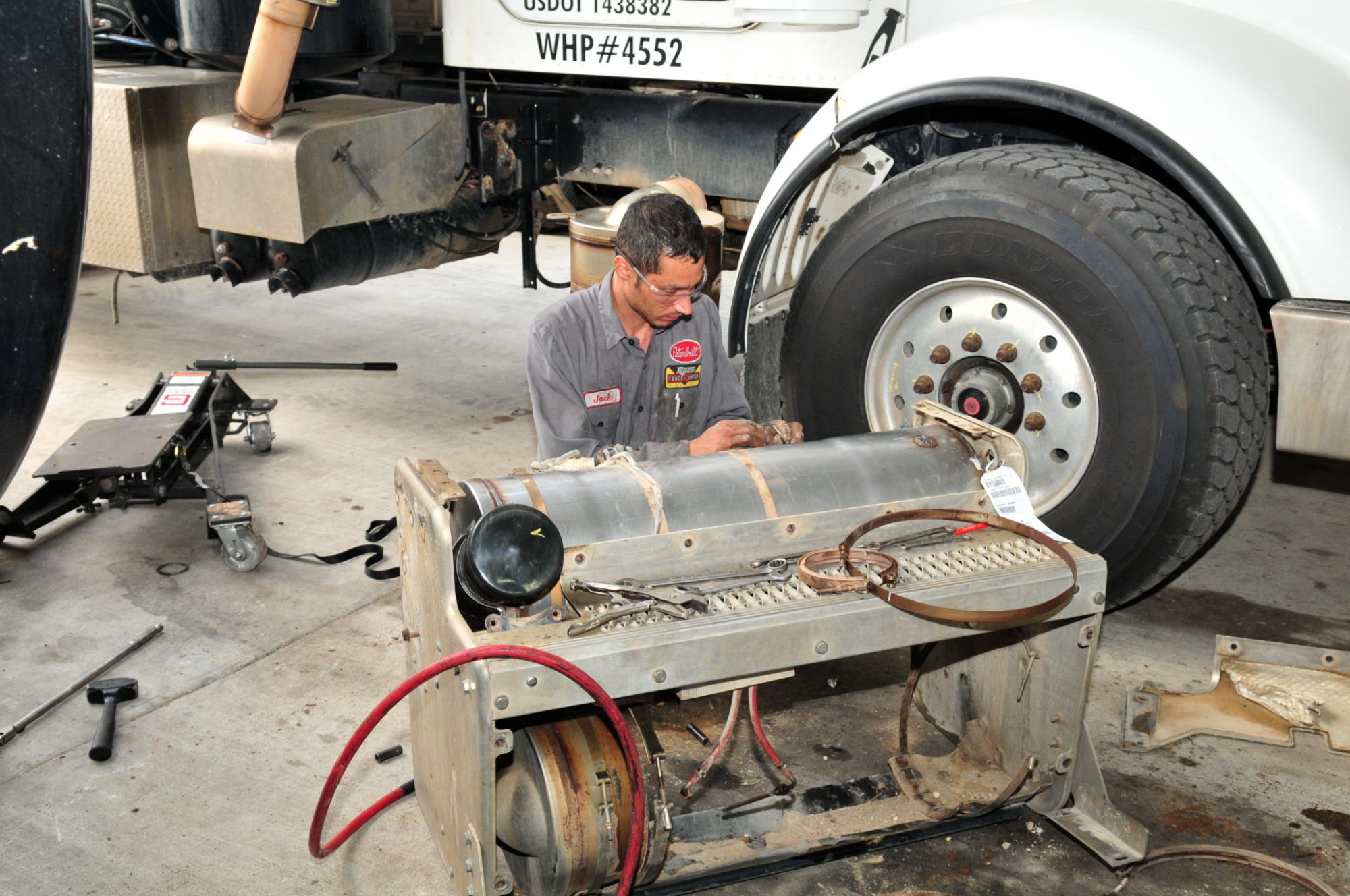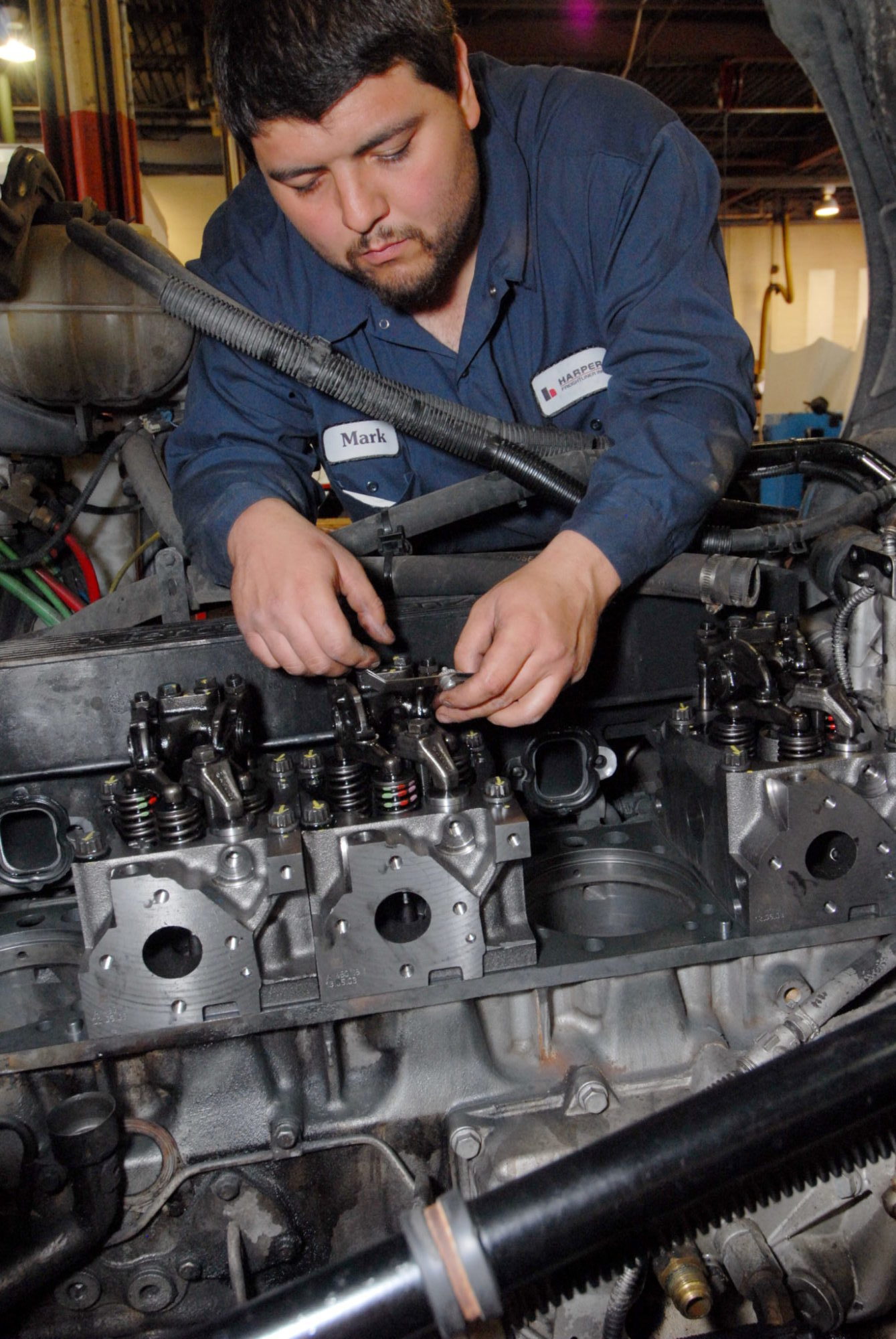Making the case for (significantly) older trucks

TORONTO, Ont. — It might be presumptive to call it a movement, but some owner-operators and small fleets are turning to (significantly) older iron rather than the typical five-year-old, million-kilometer used truck.
Used equipment that costs $60,000 to $70,000 doesn’t come with any guarantees when it comes to reliability. Much of what can go wrong with such trucks, usually emissions-systems problems, may have already been fixed at least once, but sensors tend to provide little warning of impending failure. The next repair could come the day you put it to work.
Those buying 10- to 15-year-old trucks aren’t hoping they’ll get lucky with a reliable truck. They have a different buying strategy: find something inexpensive that needs work, possibly an in-frame or an engine rebuild, do the repairs, and drive it with confidence. Dollar for dollar, they say they wind up with a more-reliable truck — probably with some warranty on the engine work — that’s easier to repair and less costly to maintain over time.

The other angle at play here is the kind of work they do. It’s a combination of business decision and lifestyle. Matt Morrison of Brantford, Ont., for example, has been an owner-operator for 10 years. His first truck was a new lease-purchase truck, which he paid off and then ran for one additional year. He took a bit of a bath selling it because nobody wanted the ’08 and ’09 models at the time, knowing the Selective Catalytic Reduction systems were just around the corner.
Every truck since that one has been used — older used.
“To pay off that Pete I was on the road two to three weeks at a time, with the longest spell away from home lasting eight weeks,” Morrison says. “That was then, this is now, and my priorities have changed since my daughter came along. I run local and regional now because I want to be home more, and I have much more flexibility not being under that big truck payment.”
His current truck is an ’09 Kenworth T660. He paid $10,000 for it and promptly put another $20,000 into it. He has had the truck for 18 months and hasn’t made a payment. Morrison figures he’s spent $35,000 on the truck so far, including the initial purchase price, so his monthly cost — even though he doesn’t look at it this way — would be less than $2,000 a month.
Even so, it’s the monthly payment he’s out to avoid. He can afford to take a more relaxed approach to his professional life knowing he doesn’t have to make that monthly hike to the bank.

For Morrison and others, like Ron Basi of Sydney, B.C., older trucks even help put a bit of fun back into a job that’s laden with stress and financial pressure.
“Most of my trucks –the newest is a 2007 — are more reliable than the newer ones,” says Basi, owner of an 18-truck commercial fleet, JenCam Transport, and a six-truck driving school, CSTT Driver Training. “I can count on them, but when something breaks, I can usually repair it myself, and I enjoy doing that kind of work.”
His newest truck is a 2007, while most of the others are ’04 and ’05 Fords, Sterlings and Kenworths. His latest acquisition was a 2004 Peterbilt he bought from Vedder Transport in early August for $50,000.
“That was the most I have ever paid for a used truck, but Vedder’s reconditioning program is so good, I know this truck is just about like new,” Basi says. “It’s a really tight, extremely well-maintained B-train spec’ that I’ll be running for years to come. I make the same money with that $50,000 truck as I can with a $150,000 truck.
Basi has maintenance facilities do most any repair he might need, but Morrison, who describes himself as a driveway mechanic, says he’s limited to minor repairs and a bit of tinkering. “I enjoy working on my truck,” he says. “If I had to do my own work just to save a buck, I don’t think I’d enjoy it as much.
“I’m much more comfortable taking the older stuff apart than the newer stuff. You start trying to replace sensors and stuff like that and the truck may not start in your driveway,” he says. “There’s a model of truck available today that you cannot even change a headlight on. While there are lots of things on older trucks that aren’t worth taking to the shop, you shouldn’t need to be a mechanic to change a headlight.”

What’s used is new again
Larry Long has an interesting business strategy. He’s Business Capacity Owner (BCO) — a fancy term for small fleet owner — with Landstar, based in Nicholasville, Ky. He’s currently running four trucks with vintages between 2007 and 2010. When buying, he looks for clean trucks with good bodies and cabs. He’s not worried about the engines because he usually rebuilds or in-frames them before putting them on the road. That way, he says he’ll get another million miles out of the engine and a year or two warranty in the bargain.
“It’s far cheaper to put a new motor in a truck than to fix up the cab,” he says. “Body and electrical failures are very unpredictable and expensive.”
Long comes from a business background rather than a trucking background and he looks at running his trucks totally through a business lens. “I don’t have any emotional attachment to a truck,” he says. “The chrome doesn’t mean anything to me. A truck to me is simply a tool and I look at it strictly from a numbers perspective.”
He credits SiriusXM radio personality Kevin Rutherford with much of his success over the past 11 years in trucking. He takes a numbers-only approach and drills deep into ways of maximizing profits through sensible spec’ing and maintenance practices. His first truck was a 2007 Freightliner Columbia, purchased used in 2009. It’s still running, now with 2.6 million km on it, and aside from routine replacement of things like starters, alternators, brakes, tires and the like, he has only had to replace a turbocharger. The engine has never been apart. His newest truck is a 2010 Cascadia.
“We’re just now learning about SCR and its idiosyncrasies, but so far it’s working out OK,” he says.
Although the trucks are older, they are still in good mechanical condition. He says Landstar requires all its trucks to undergo a full DOT inspection every 120 days. His current fleet fuel economy is running between 7.5 and 8 miles per gallon (31.4 to 29.4 L/100 km), so he’s not giving up anything there by running older trucks.
The low-cost business model can pay huge dividends. Long says each of his drivers is earning between US $90-$100,000 a year. “I couldn’t afford to pay them that much if I was tied into a big truck payment,” he says. He also mentors his drivers into ownership if that’s what they want to do, helping them find and buy a truck and coaching them on how to manage their business. “Nine out of 10 first-time owner-operators fail the first time around because they bought too much truck,” Long insists.
Like Morrison, who values not having to spend every waking hour either driving or working on the truck, Long says his business model allows for a few weeks’ vacation every year while still managing to save 20% off the paycheque.
With the extraordinary cost of late-model used trucks, older iron is looking pretty attractive these day. As these fleet-owners insist, buying an older truck can keep you in the game and profitable — if you research the truck before buying it or know something about it. Being handy with a wrench helps, but it’s not a requirement. Plenty of shops will work on older equipment and parts are plentiful.
Besides, Basi says, “Small fleet owners can’t afford to go to a dealer every time the check-engine light comes on.”

Used trucks: Because you want to or because you have to?
We recently learned that a brand-new truck — a top-of-the-line highway tractor with most of the bells and whistles — had sold in eastern Canada for an astonishing $214,000. Meanwhile, decent-looking five-year-old used trucks are selling across the country for prices in the $70,000 to $90,000 range. The asking prices for two-year-old trucks are well north of $100K. On the other hand, 10-year-old trucks can be had for between $20,000 and $30,000.
It would be very difficult for a first-time owner-operator to finance a two-year-old truck, while getting approved for a five-year-old truck might be more realistic. However, on top of the payment, that truck will carry a higher risk of breakdowns. As is often said, it’s not the cost of the repairs that really hurts, it’s the downtime. Can you afford to be sidelined for a few days out of a month when you’re making $2,000 to $3,000 payments?
The challenge with late-model used trucks is the technology. Much of it cannot be diagnosed or repaired without expensive specialized tools. That can be a problem for even the mechanically inclined driveway mechanic. Older used trucks, pre-2009 for example, do not have diesel particulate filters and selective catalytic reduction (SCR) systems or the legions of sensors that come with them. While older trucks may need more frequent repairs, much more of that work can be done by a reasonably skilled owner.
Matt Morrison, a single-truck owner from Brantford, Ont., says older cabs that have not be well maintained pose more of a challenge than major mechanical components, like engines brakes and cooling systems. “The shop rate is the same for cab work as engine work, and electrical problems and bodywork can keep you in the shop forever,” he warns.
“I’d rather spend $90,000 on a 10-year-old truck than on a five-year-old truck,” he says, referring to a $30,000 purchase price, $30,000 for an engine rebuild, and another $30,000 for other major work. “You’ll have a more-reliable truck that the newer one that may still need $30,000 in repairs in the first year you own it.”
Have your say
This is a moderated forum. Comments will no longer be published unless they are accompanied by a first and last name and a verifiable email address. (Today's Trucking will not publish or share the email address.) Profane language and content deemed to be libelous, racist, or threatening in nature will not be published under any circumstances.